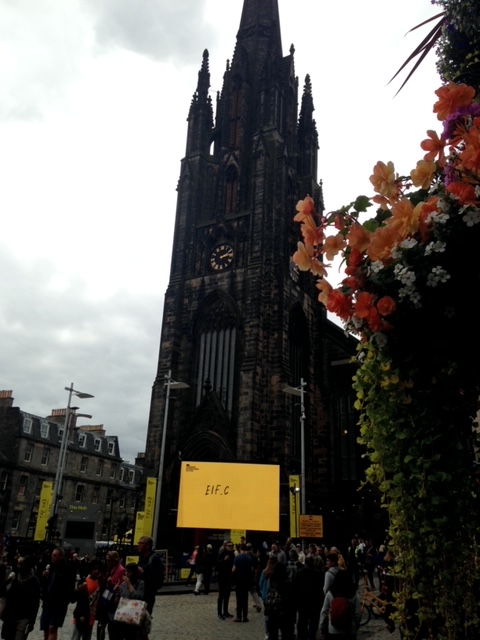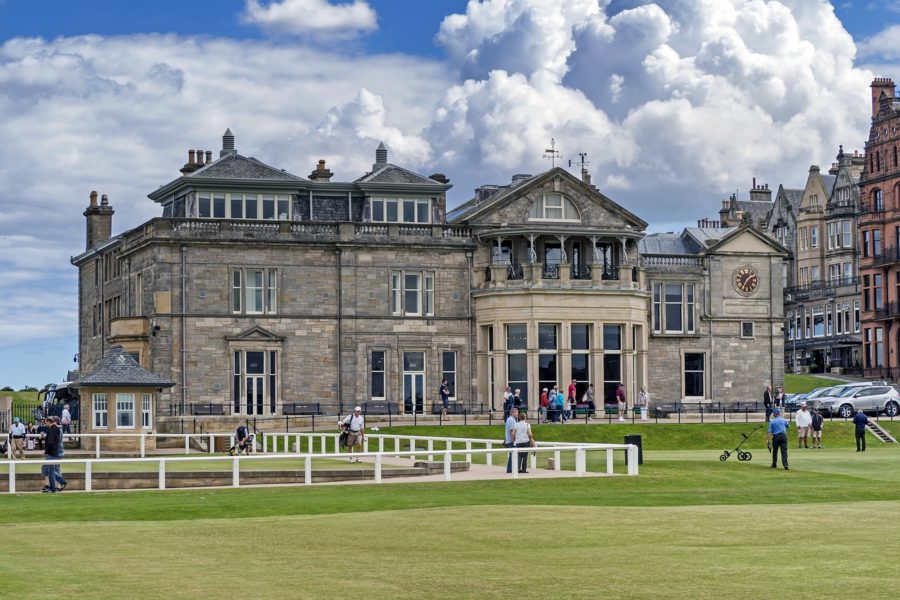 View Winners →
View Winners → A Walking Tour Of St Andrews And Edinburgh In Scotland (UK)


Edinburgh Castle, Balmoral Hotel and Clock Tower.
By May S. Ruiz
There was a time when my awareness of Scotland was very much limited to Scotch whisky, for which I have neither a fondness nor taste. However, I do know several people who enjoy the single malt variety so you might say I appreciate Scotch by osmosis.
Five years ago, though, I visited Scotland for the first time and that experience gave me a bit more knowledge about this beautiful country (other than that of producing James Bond and Scotch). Two weeks ago, I went back for my third visit. As I did on my first venture, I went to Edinburgh and St Andrews.
Edinburgh, located in Lothian on the Firth of Forth’s southern shore, is the capital of Scotland. Besides being home to the Scottish Parliament and the seat of the monarchy in Scotland, it is the second most populous city in Scotland and the seventh most populous in the United Kingdom.
From Edinburgh Airport, a visitor can board the tram then get off on either Haymarket or Waverley station to get into the city. Of course, taking a taxi might be the best option especially if you have a lot of luggage to tote.

Balmoral Hotel is immediately outside the entrance to Waverley Station.
The city has several hotel choices to accommodate one’s budget. If you plan on staying close to Waverley Station, there is the Victorian-style Balmoral Hotel, a structure so recognizable with its majestic clock tower. It is located on the east end of Princes Street and is an excellent starting point from which to start your sight-seeing.
This being a walking tour of Edinburgh, I concentrated on the town center – mainly Princes street and adjoining thoroughfares. And you can’t properly claim to have visited this picturesque city without an excursion to Edinburgh Castle.
An imposing fortress sitting on top of Castle Rock, Edinburgh Castle is the edifice that is most associated with the city. It was a principal royal residence from the 11th century until the early 17th century; it provided comfortable living quarters to the reigning monarch and a repository for royal treasures and registers.
From Princes Street, I walked up the Royal Mile to the esplanade. There is a Gatehouse at the head of it, and the road leads up to Half Moon Battery and the Farewell Battery, to the Portcullis Gate and Argyle Tower.
There are several historical structures here – the Governor’s House, the New Barracks, the National War Museum of Scotland, the Upper Ward or Citadel, St Margaret’s Chapel, the Mons Meg, the Queen Anne Building, and so on.
The Royal Palace began as an extension to David’s Tower. It comprises the former royal apartments; the King’s Dining Room; the Birth Chamber or Mary Room; the Great Hall; and the Crown Room, built in 1615 to house the Honours of Scotland – the crown, the sceptre, and the sword. To the south of the palace is the Register House, built in the 1540s to accommodate state archives.

Palace of Holyroodhouse.
At the end of the Royal Mile, on the opposite end to Edinburgh Castle, stands the Palace of Holyroodhouse, the official residence of the British monarch in Scotland. It is the setting for state occasions and official engagements.
Tour guides will be quick to point out that Holyrood Palace is not Queen Elizabeth II’s residence; it is where she stays for a week at the beginning of summer for official ceremonies. The queen’s home in Scotland is Balmoral Castle in Aberdeenshire.
American television viewers who have never been to Edinburgh learned about Holyrood Palace during Season I of ‘Outlander’ whose main characters, Claire and Jamie Fraser, joined Bonnie Prince Charles in his efforts to claim the throne of Great Britain for his father. He set up court here for six weeks in 1745 and the palace became the symbolic residence of the Stuart prince in his Scottish capital.
There are so many landmarks to take in depending on how long you’re staying – the Scottish Parliament, Scottish National Gallery, St. Giles Cathedral, The Real Mary King’s Close, the Edinburgh Zoo, etc. As I come here every year, I select only one or two sightseeing expeditions during each stay.
Edinburgh has the most gorgeous skyline and a perfect perch from which to see the capital in all its splendor is the esplanade of Edinburgh Castle. During August, though, it is filled with viewing stands for people to watch the Royal Edinburgh Military Tattoo in the evenings. It is one of Scotland’s greatest events staged on the esplanade of the castle and if you’re here in August it is a spectacular event you shouldn’t miss.
As I was determined to get a bird’s eye view, I took in the sights from the Edinburgh Ferris wheel. From high up I observed the entire city below and, as always, I found it breathtaking.
This being August, the Edinburgh International Festival and Edinburgh Festival Fringe were in full swing; flyers for the many theatre performances and art shows were plastered everywhere I looked. Fringe buskers entertained from every available street space; coffee shops, restaurants, stores selling all sorts of Scottish items – from a small key chain to a full kilt ensemble as a memento of your Gaelic experience – bustled with tourists.

At Waverley Station.
Having had my fill of Edinburgh, I boarded the Scott Rail from Waverly Station to St Andrews, a seaside town about 30 miles northeast of Edinburgh. The train going to Aberdeen makes a stop at Leuchars and this was where I hopped in a cab that took me to the town center.
Even those who aren’t golf aficionados know that St Andrews is the birthplace of golf, where it was first played in the 15thcentury. It is home to the iconic Old Course where, to this day, the British Open is held every five years.
I can confidently say that St Andrews has mainly two kinds of visitors – golfers who flock into town during the summer months and students who populate it from fall through spring. It really is a small place with three major thoroughfares: North; Market; and South Streets.
Tourists usually start their excursion at the Royal and Ancient Golf Club, the world’s oldest association for the sport. Established in May 1754, its membership has grown to about 2,500 worldwide and is regarded as the governing authority in the United Kingdom and beyond.

The Royal and Ancient Golf Club.
Of course, one could never miss the much-celebrated Old Course, Swilcan Bridge, and Hell Bunker. They are, after all, the images people usually conjure when they think of St Andrews.
Golfers consider going to the Old Course significant in itself; yet its most noteworthy feature is that despite its lofty reputation it is actually open to the public. Obtaining a tee time isn’t an impossible feat as long as you have a suitable handicap (24 for men and 36 for women). However, due to its immense popularity, booking the Old Course involves employing a few strategies.
St Andrews is also home to the oldest university in Scotland and third oldest in the United Kingdom. Founded in 1413, the University of St Andrews has been ranked by the University League Table third in overall academic excellence behind Cambridge and Oxford.
The University of St Andrews doesn’t really have a campus – its buildings are spread all over town. If you’re visiting during term – Martinmas semester (early September to mid-December) and Candlemas semester (late January to the end of May) – you’ll probably find yourself strolling alongside students hurrying off to their lecture or tutorial.
I find all the university’s stone-clad structures awe-inspiring – from St Salvator’s Hall to St Mary’s College. How wonderful it must feel to be going to school in such stunning surroundings!

St Salvator’s Hall.
Other in-town attractions I would suggest visiting are: British Golf Museum, St Andrews Cathedral, Scotland’s National Aquarium and Inchcolm Abbey, and the Botanical Garden.
All these delightful places in Edinburgh and St Andrews offer the grace and old-world grandeur of times past. They are a reminder of an age of civility and gentility – an escape we sorely need given our current fractured society.











































































































